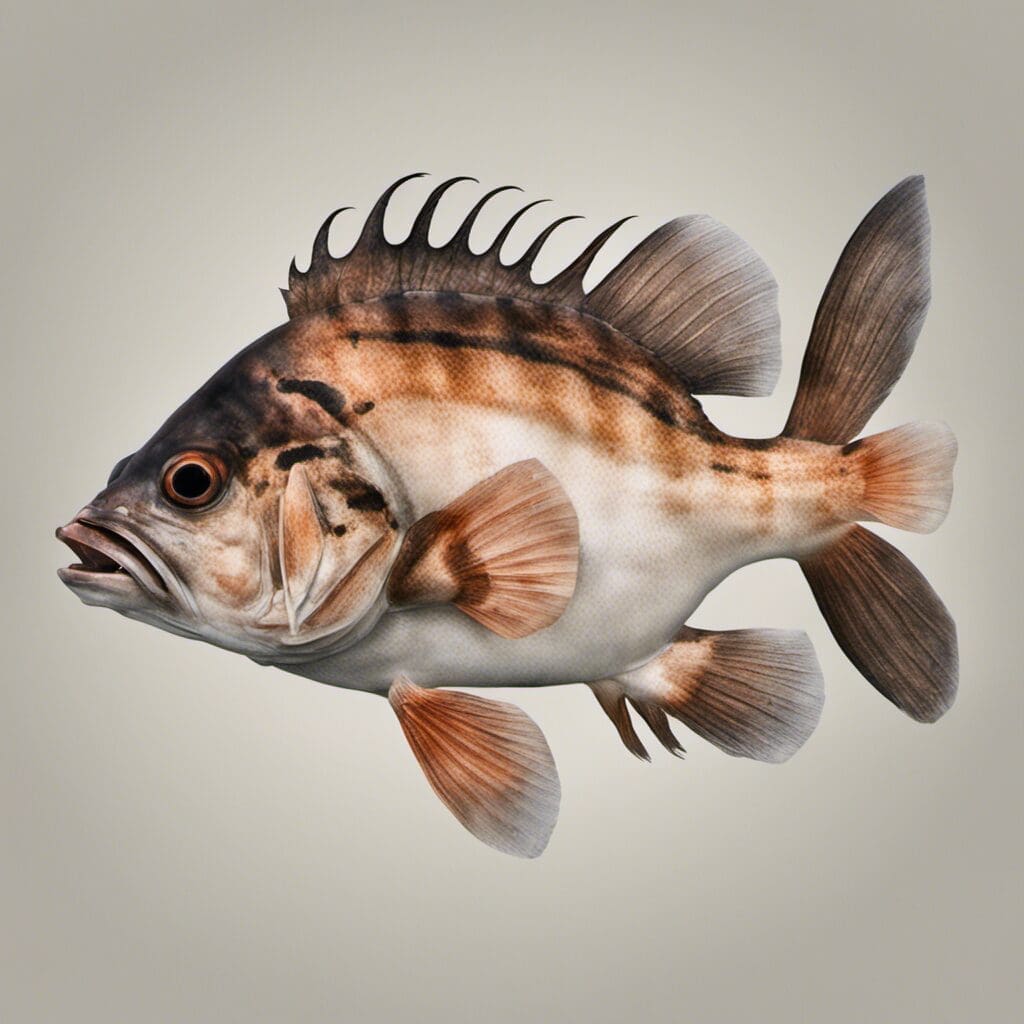Introduction
The Quillback Rockfish (Sebastes maliger) is a firm favorite species among sport fishers, especially those who enjoy deep-sea fishing. This mid-sized rockfish is part of the Scorpaenidae family, well known for their spiny fins.
Conservation Status
The current conservation status of the Quillback Rockfish is ‘Least Concern’ as determined by the International Union for Conservation of Nature (IUCN). Conservation efforts are in place and constantly monitored due to its prominence as a targeted species by commercial fisheries.
Statistics
The typical characteristics of the Quillback Rockfish are as follows:
| Characteristic | Average | Range |
|---|---|---|
| Length | 45 cm | 30-61 cm |
| Weight | 1.5 kg | 1-3 kg |
| Lifespan | 95 years | Dependent on environment |
Distribution
Originally from Russia, the Quillback Rockfish has a wide distribution stretching along the Pacific coast of North America, from Alaska to California. They are non-migratory, instead choosing to inhabit the same rocky reefs and structure throughout their lifespan.
Habitats
Quillback Rockfish are typically found in saltwater, specifically in the subtidal zone down to depths of approximately 274 meters. They prefer cool, temperate waters and are accustomed to living around rocky outcroppings and underwater crevices.
When and Where to See
Quillback Rockfish are a year-round catch but can be more readily seen from late spring through to early fall. They are more active during the day, often hiding in rock crevices at night.
Best Fishing Locations
- Neah Bay, Washington
- Katatia Harbor, Alaska
- Kachemak Bay, Alaska
- Gulf of Alaska, Alaska
- Fogarty Creek, Oregon
- Humboldt Bay, California
- Monterey Bay, California
- Juan de Fuca Strait, Washington
- Coos Bay, Oregon
- San Mateo Coast, California
How to Catch
Quillback Rockfish respond well to bait such as shrimp, crab, clam meat, and other small fishes. Rockfish can be caught through bottom fishing and trolling methods, with the best time to catch them being during daylight hours.
Identification Guide
Quillback Rockfish are characterized by their brown to copper color, large mouth, spiny dorsal fin, and a distinct quill-like spine at the rear of the first dorsal fin. They are easily distinguished from other Rockfish species by their high, arching back.
Culinary
Quillback Rockfish’s white, firm flesh is considered excellent for various dishes, baked, broiled, or even used in fish tacos. It’s virtually boneless and has a mild, sweet flavor that lends itself well to a multitude of flavors and cooking methods.
Additional Information
Quillback Rockfish are bottom-dwelling predators, feeding primarily on prawns, shrimp, and various types of crustaceans. They are preyed upon by larger fish, such as the Lingcod. The species plays a significant role in the cultural history of traditional indigenous communities, revered for its strength and ability to survive in deep, tumultuous waters.
References and Further Reading
For more information about the Quillback Rockfish, the following sources are recommended for further reading:
- “Sebastes maliger - Quillback Rockfish.” FishBase
- “Identifying Rockfish.” Alaska Department of Fish and Game
- “Fisheries of the United States, 2018 Report.” National Oceanic and Atmospheric Administration (NOAA)

